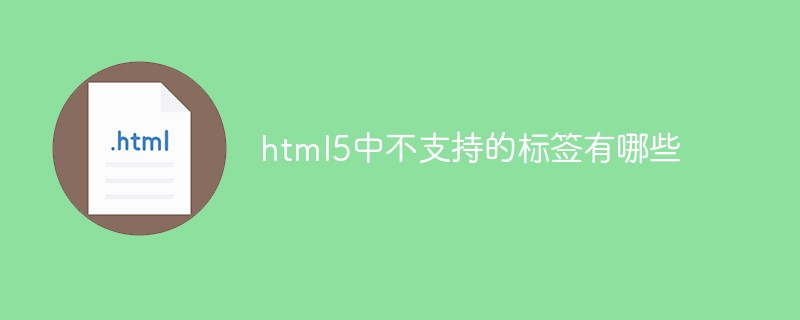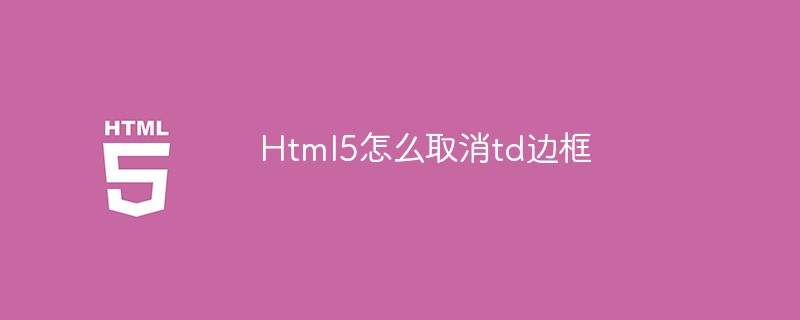HTML5After all, the specification is a specification that has just been defined. There are still some browsers that cannot support the new tags and new attributes, especially browsers of IE8 and below. The following is an introduction to the browser compatibility issue for handling HTML5 new tags. Friends who need it can refer to
After all, the HTML5 specification is a specification that has just been defined. There are also some browsers that cannot support the new tags and New properties, especially for browsers IE8 and below. The following introduces some practical methods for using HTML5 new tags in pages. The purpose is to allow the new tags in HTML5 to receive limited support in low-level browsers and not affect the entire page function.
Let the browser recognize the new tags in the HTML5 specification
The IE8 browser has not yet added support for the HTML5 new tags, so in IE8 cannot directly display the content in HTML5 new tags. Fortunately, IE8/IE7/IE6 supports tags generated through the document.createElement method. You can use this feature to make these browsers support HTML5 new tags. The code is as follows:
var e = "abbr, article, aside, audio, canvas, datalist, details, dialog, eventsource, figure, footer, header, hgroup, mark, menu, meter, nav, output, progress, section, time, video".split(', ');
var i= e.length;
while (i--){
document.createElement(e[i])
}
Browser After supporting new tags, you also need to add the default style of the tag:
article,aside,figcaption,figure,footer,header,hgroup,nav,section{display:block}
mark{background:#FF0;color:#000}
In this way, two simple pieces of JavaScript code and CSS code can allow IE8 and below browsers to support the new tags in HTML5 Label. Of course, the best way is to directly use the mature framework. There are currently multiple frameworks based on this idea. The most used one is the html5shim framework. The method of using html5shim is very simple. Add the frame in the head part of the page. Just quote:
<!--[if lt IE 9]> <script> src="http://html5shim.googlecode.com/svn/trunk/html5.js"</script> <![endif]-->
Backward compatibility of new features in HTML5
HTML5 in a broad sense includes HTML5, CSS3 and new The API. Because new features will have more or less browser compatibility issues, it is very necessary to check whether the browser supports this feature when using new features. When the browser does not support new features, appropriate backward compatibility processing can be done. Currently, there is no unified method to detect support for new features. Some new features have corresponding APIs that can be identified, and some new features can only be identified through some techniques. Fortunately, enthusiastic engineers abroad have developed multiple frameworks for detecting new features. Among them, Modernizr has higher detection accuracy and usage rate.
The principle of the Modernizr framework is to automatically detect whether the browser supports new features and add the corresponding class to the tag. If the browser supports a feature, a class named with the feature name will be added. Otherwise, a class named with the "no-" prefix plus the feature name will be added. At the same time, an object named modernizr will also be generated. By judging the attribute values representing each feature on this object, you can know whether the current browser supports this new feature. The Modernizr framework also includes the functions of the html5shim framework, which allows browsers IE8 and below to support new tags.
The method of using Modernizr is very simple. First, introduce the JavaScript file of the framework in the head part:
<script></script>
Secondly, add a class named no-js on the html tag :
If the browser does not disable JavaScript, the classes on the html tag will be dynamically replaced and added after the browser loads the page. After loading, the html tag looks like the following:
In the CSS code, you can add backward compatibility code by using these classes. The following is an example of using multiple background images:
#nice {
background: url(background-one.png) top left repeat-x;
}
.multiplebgs #nice {
background: url(background-one.png) top left repeat-x,url(background-two.png) bottom left repeat-x;
}
This Readers who are interested in the framework can browse the official website of Modernizr for more detailed examples and usage methods.
Audio and video compatibility
Audio and video are commonly used Multimedia tags in the page, but the browser Compatibility is more confusing, so it is treated as a separate topic here. Audio and video are relatively early features that are natively supported by browsers, so audio and video playback is no longer limited to third-party plug-ins, especially on mobile platforms. Audio and video are a big piece of cake, and each browser manufacturer wants to get the biggest piece. This has also led to the differentiation of audio and video formats supported by browsers. The list of audio formats supported by the browser is as follows:
Browser |
Version |
Supported formats |
Internet Explorer |
9.0+ |
MP3, AAC |
Chrome |
6.0+ |
##Ogg Vorbis, MP3, WAV (9.0+) |
| Firefox | ##3.6+Ogg Vorbis, WAV | |
Safari |
5.0+ |
MP3, AAC, WAV |
Opera |
10.0+ |
Ogg Vorbis, WAV |
大约有80%的浏览器支持HTML5的
<audio> <source> <source> <!-- 向后兼容代码:如,显示提示信息、提供下载链接使用flash播放器等 --> 浏览器不支持<code>audio</code>标签 </source></source></audio>
视频也有和音频类似的状况,如下是浏览器支持视频的格式列表:
浏览器 |
版本 |
支持格式 |
Internet Explorer |
9.0+ |
MP4 |
Chrome |
6.0+ |
MP4,WebM,Ogg |
Firefox |
3.6+ |
WebM,Ogg |
Safari |
5.0+ |
MP4 |
Opera |
10.0+ |
WebM,Ogg |
从浏览器支持的视频格式来看,最佳的方式是提供WebM和MP4两种格式的视频。兼容代码如下:
<video> <source> <source> <iframe></iframe> </source></source></video>
The above is the detailed content of Handling browser compatibility issues with HTML5 new tags. For more information, please follow other related articles on the PHP Chinese website!
 html5的div一行可以放两个吗Apr 25, 2022 pm 05:32 PM
html5的div一行可以放两个吗Apr 25, 2022 pm 05:32 PMhtml5的div元素默认一行不可以放两个。div是一个块级元素,一个元素会独占一行,两个div默认无法在同一行显示;但可以通过给div元素添加“display:inline;”样式,将其转为行内元素,就可以实现多个div在同一行显示了。
 html5中列表和表格的区别是什么Apr 28, 2022 pm 01:58 PM
html5中列表和表格的区别是什么Apr 28, 2022 pm 01:58 PMhtml5中列表和表格的区别:1、表格主要是用于显示数据的,而列表主要是用于给数据进行布局;2、表格是使用table标签配合tr、td、th等标签进行定义的,列表是利用li标签配合ol、ul等标签进行定义的。
 html5怎么让头和尾固定不动Apr 25, 2022 pm 02:30 PM
html5怎么让头和尾固定不动Apr 25, 2022 pm 02:30 PM固定方法:1、使用header标签定义文档头部内容,并添加“position:fixed;top:0;”样式让其固定不动;2、使用footer标签定义尾部内容,并添加“position: fixed;bottom: 0;”样式让其固定不动。
 HTML5中画布标签是什么May 18, 2022 pm 04:55 PM
HTML5中画布标签是什么May 18, 2022 pm 04:55 PMHTML5中画布标签是“<canvas>”。canvas标签用于图形的绘制,它只是一个矩形的图形容器,绘制图形必须通过脚本(通常是JavaScript)来完成;开发者可利用多种js方法来在canvas中绘制路径、盒、圆、字符以及添加图像等。
 html5中不支持的标签有哪些Mar 17, 2022 pm 05:43 PM
html5中不支持的标签有哪些Mar 17, 2022 pm 05:43 PMhtml5中不支持的标签有:1、acronym,用于定义首字母缩写,可用abbr替代;2、basefont,可利用css样式替代;3、applet,可用object替代;4、dir,定义目录列表,可用ul替代;5、big,定义大号文本等等。
 html5废弃了哪个列表标签Jun 01, 2022 pm 06:32 PM
html5废弃了哪个列表标签Jun 01, 2022 pm 06:32 PMhtml5废弃了dir列表标签。dir标签被用来定义目录列表,一般和li标签配合使用,在dir标签对中通过li标签来设置列表项,语法“<dir><li>列表项值</li>...</dir>”。HTML5已经不支持dir,可使用ul标签取代。
 Html5怎么取消td边框May 18, 2022 pm 06:57 PM
Html5怎么取消td边框May 18, 2022 pm 06:57 PM3种取消方法:1、给td元素添加“border:none”无边框样式即可,语法“td{border:none}”。2、给td元素添加“border:0”样式,语法“td{border:0;}”,将td边框的宽度设置为0即可。3、给td元素添加“border:transparent”样式,语法“td{border:transparent;}”,将td边框的颜色设置为透明即可。
 html5为什么只需要写doctypeJun 07, 2022 pm 05:15 PM
html5为什么只需要写doctypeJun 07, 2022 pm 05:15 PM因为html5不基于SGML(标准通用置标语言),不需要对DTD进行引用,但是需要doctype来规范浏览器的行为,也即按照正常的方式来运行,因此html5只需要写doctype即可。“!DOCTYPE”是一种标准通用标记语言的文档类型声明,用于告诉浏览器编写页面所用的标记的版本。


Hot AI Tools

Undresser.AI Undress
AI-powered app for creating realistic nude photos

AI Clothes Remover
Online AI tool for removing clothes from photos.

Undress AI Tool
Undress images for free

Clothoff.io
AI clothes remover

AI Hentai Generator
Generate AI Hentai for free.

Hot Article

Hot Tools

EditPlus Chinese cracked version
Small size, syntax highlighting, does not support code prompt function

Dreamweaver CS6
Visual web development tools

WebStorm Mac version
Useful JavaScript development tools

SublimeText3 Mac version
God-level code editing software (SublimeText3)

DVWA
Damn Vulnerable Web App (DVWA) is a PHP/MySQL web application that is very vulnerable. Its main goals are to be an aid for security professionals to test their skills and tools in a legal environment, to help web developers better understand the process of securing web applications, and to help teachers/students teach/learn in a classroom environment Web application security. The goal of DVWA is to practice some of the most common web vulnerabilities through a simple and straightforward interface, with varying degrees of difficulty. Please note that this software






